10 Must-Read UX Design Books for Improving Your Skills and Advancing in Your Career
Unlock design excellence with our top 10 book recommendations, essential for refining skills and mastering UX design

I've been a designer for over 10 years.
Over that time, I've concluded that the best designers do two things. One, they practice every day. Two, they read. As much as possible.
We can learn a lot from those who've been there before, and as Stephen King once said, "Books are uniquely portable magic."
Designers from all walks of life have come before us, giving us the opportunity to learn from their experiences. To help us grow, succeed and become better people.
Learning from others is crucial for reaching our full potential.
So here we are, a list of 10 of my favourite books. Each one has helped shape my entire professional career, and I'm excited to share them with you.
All apply to design in one way or another, with the last being a bit of a wildcard.
Knowledge doesn't always come from the most obvious places, so I would recommend the last book regardless of your profession.
Let's go!
The Design of Everyday Things

Ah, the enduring relevance of The Design of Everyday Things persists. What kind of list would this be if it didn't feature this classic?
A formative book that I took everywhere with me while in my first year of design school. I still have it, dog-eared and annotated, and I cherish the insights it provided, shaping my approach to design ever since.
Of all the design books I've read, I find this the most enjoyable. Why? So much of its content just makes sense, and the pace at which it is delivered is akin to a dear old friend sharing some advice with you.
"Good design is actually a lot harder to notice than poor design, in part because good designs fit our needs so well that the design is invisible, serving us without drawing attention to itself. Bad design, on the other hand, screams out its inadequacies, making itself very noticeable." - Don Norman, The Design of Everyday Things
As we approach 2024, designers globally continue to find value in the book's insightful exploration of design principles.
The fundamentals of user experience and technological innovation are outlined by Don Norman and serve as a universal guide for designers seeking to create impactful and intuitive solutions.
While some of the content may seem dated, much of its teachings are everlasting.
In this book, you'll learn about:
- Concepts of Visibility and Affordance:
Norman discusses the importance of making the functions and features of an object or system visible and understandable to users. He introduces the concept of affordances, where the design suggests how an object can be used. - Mapping and Feedback:
The book delves into the significance of clear mapping between controls and their effects, ensuring that users can easily understand the relationships. Feedback mechanisms, both immediate and informative, are explored as crucial aspects of effective design. - Concepts of Constraints:
Norman emphasises the role of constraints in design, whether they are physical, cultural, or semantic. Constraints guide users in understanding the proper way to interact with a system and help prevent errors. - Human Error and Error Messages:
The book discusses the inevitability of human error and the importance of designing systems that are forgiving and allow for easy recovery. Norman addresses the pitfalls of poorly designed error messages and provides insights into creating user-friendly feedback. - Cognitive Models and Mental Models:
Norman explores the concept of mental models, the internal representations that individuals develop to understand how a system works. He highlights the importance of aligning the designer's conceptual model with the user's mental model for optimal usability.
Whether you're in London, Los Angeles or Tokyo, the importance of understanding design principles remains a constant, shaping the way designers approach their craft and contribute to the broader entrepreneurial ecosystem.
If you're a fledgling designer, start with this book.
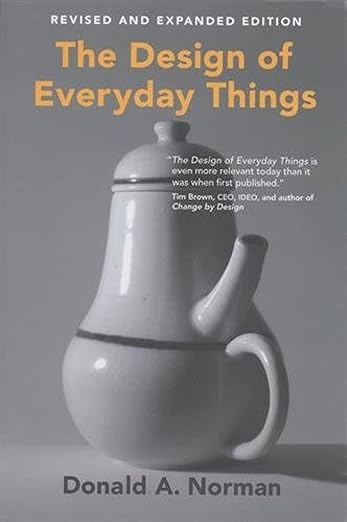
The Design Of Everyday Things
Even the smartest among us can feel inept as we try to figure out the shower control in a hotel or attempt to navigate an unfamiliar television set or stove.
When The Design of Everyday Things was published in 1988, cognitive scientist Don Norman provocatively proposed that the fault lies not in ourselves, but in design that ignores the needs and psychology of people.
Sprint: How to Solve Big Problems and Test New Ideas in Just Five Days
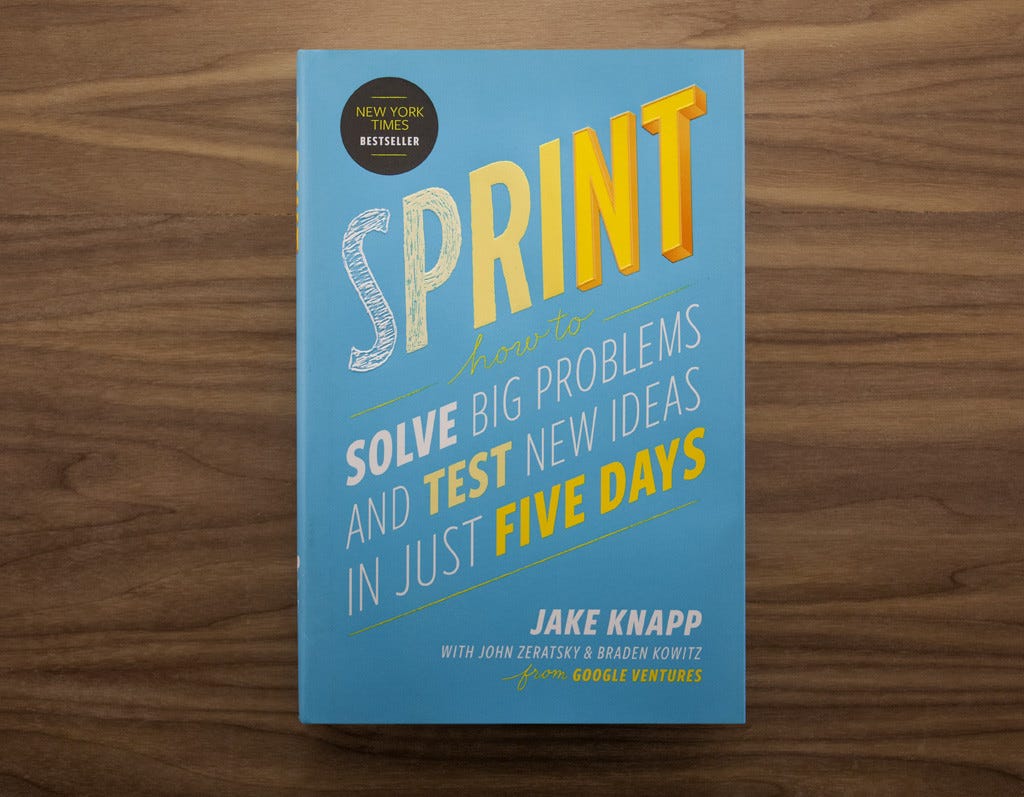
Sprint: How to Solve Big Problems and Test New Ideas in Just Five Days by Jake Knapp, John Zeratsky, and Braden Kowitz is a must-read for designers seeking a systematic approach to problem-solving and innovation.
This book encapsulates the design sprint methodology, providing invaluable insights and a structured framework for tackling complex challenges efficiently.
At its core, Sprint is a practical guide that condenses the essential elements of design thinking into a five-day process. The authors draw from their experiences at Google Ventures, where they refined and optimised this approach to streamline decision-making and prototype development.
This methodology will only work within companies and teams that are open-minded about how they get stuff done.
One of the book's strengths lies in its accessibility.
It's often a book that I'd share with non-designers, as it does a good job of demystifying the design process. The language is clear, and the concepts are presented in a way that resonates with professionals from various backgrounds.
The five-day structure proposed by the authors is particularly appealing to designers working in fast-paced environments, as well as stakeholders that "need ideas yesterday."
In a world where time is often a scarce resource, the sprint methodology offers a concise yet comprehensive strategy for addressing challenges.
From mapping out the problem to sketching solutions and building a prototype, each day is carefully crafted to maximise efficiency without compromising creativity.
Sprint advocates for a collaborative approach. By bringing together cross-functional teams, the book promotes diverse perspectives and ensures that all voices are heard in the problem-solving process.
The emphasis on prototyping and testing within a short timeframe is another notable feature. Designers are encouraged to move beyond theoretical discussions and quickly validate ideas through tangible prototypes.
In my experience, this has been an opportunity to bring engineers into sessions they may have not been invited to before. Towards the end of a sprint session, I like to have a basic, workable prototype built by the engineering team.
This change of mindset and rapid iteration process not only accelerates the development cycle but also minimises the risks associated with prolonged decision-making.
Sprint is a valuable resource for designers seeking a pragmatic, time-efficient, and collaborative approach to problem-solving.
Its applicability to a range of industries and its adaptability to different organisational structures make it an essential addition to any designer's toolkit.
It's not for every business, so approach the methodology with caution.

Sprint: Solve Big Problems And Test New Ideas In Just Five Days
Entrepreneurs and leaders face big questions every day: What's the most important place to focus your effort, and how do you start? What will your idea look like in real life?
How many meetings and discussions does it take before you can be sure you have the right solution? Get it done faster with this book.
Thinking, Fast and Slow
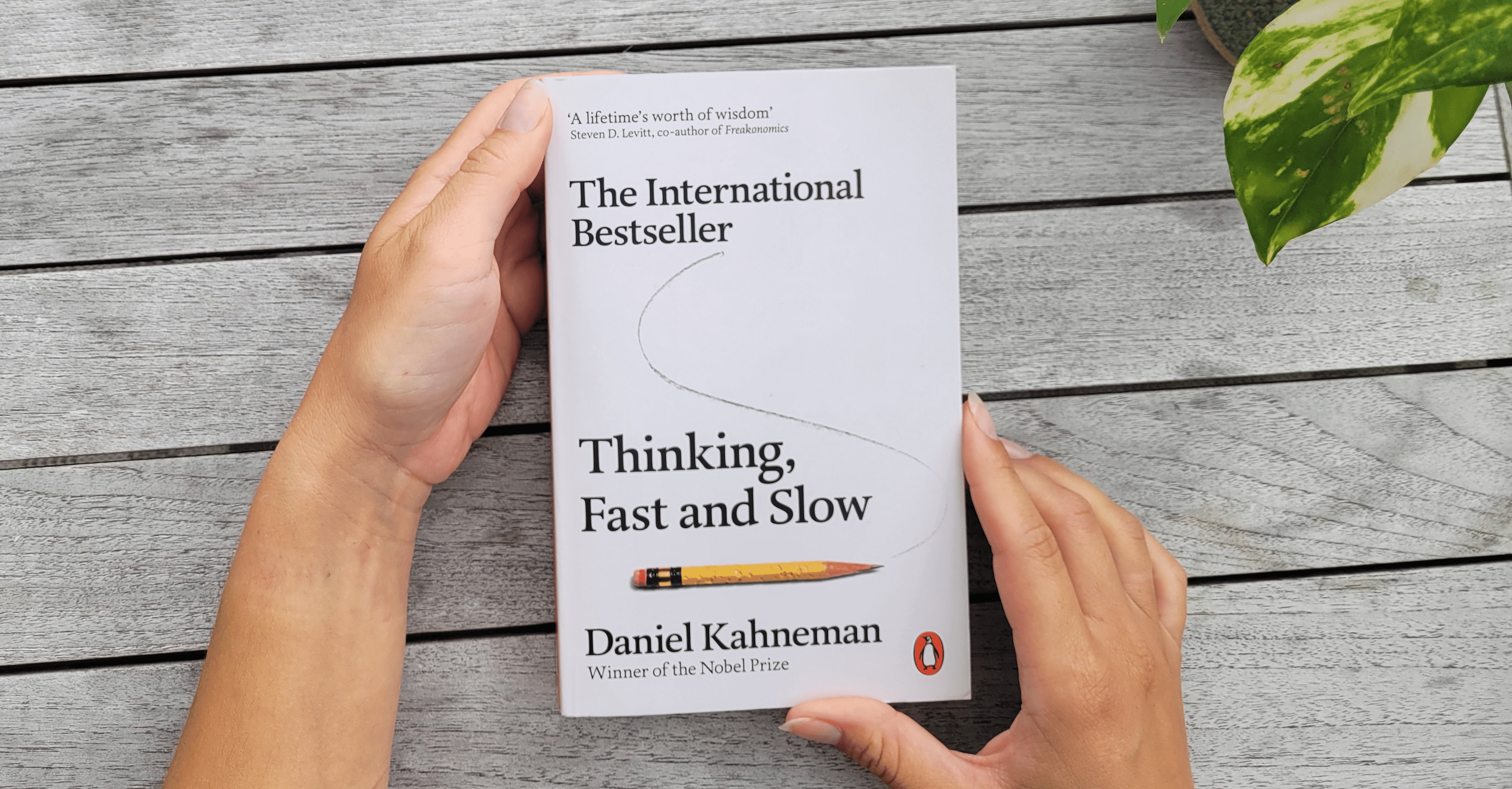
Thinking, Fast and Slow by Daniel Kahneman distils thinking into two systems: System 1, which is fast and intuitive, and System 2, which is slow and deliberate.
Kahneman, a Nobel Prize-winning psychologist, takes readers on a fascinating journey through the complexities of human decision-making. It's certainly had an impact on me, helping me consider more about why I think the way I think.
The book delves into how these so-called systems shape our judgments and decision-making processes, highlighting instances where our intuitive thinking leads to biases and errors.
As someone who participated in his fair share of user research, the more I can reduce biases and errors, the better.
On cognitive biases, Kahneman identifies numerous different types that affect our judgment, such as the availability heuristic, anchoring, and overconfidence.
By understanding what these mean, and how they can impact quality of work, readers gain insights into the inherent pitfalls of human decision-making and how these biases can impact various aspects of life, including business and personal relationships.
“If you care about being thought credible and intelligent, do not use complex language where simpler language will do.” - Daniel Kahneman
The prospect theory introduced by Kahneman and Amos Tversky is a central theme in the book.
It explains how people evaluate potential losses and gains, demonstrating that individuals are more averse to losses than they are motivated by equivalent gains.
Kahneman also touches on the concept of "the two selves" – the experiencing self and the remembering self. This exploration adds a nuanced perspective to our understanding of happiness and memory, challenging conventional notions.
Perhaps somewhat leftfield of normal UX book recommendations, but a worthy addition to your library.
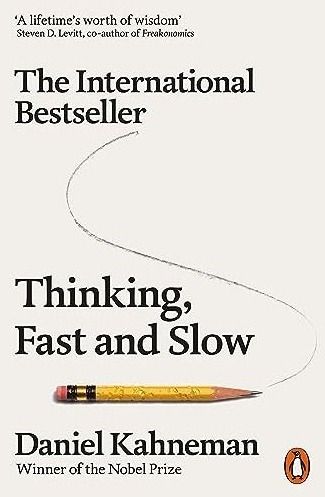
Thinking Fast and Slow
Why do we make the decisions we do? Nobel Prize winner Daniel Kahneman, 'the world's most influential living psychologist' (Steven Pinker) revolutionised our understanding of human behaviour with Thinking, Fast and Slow.
Distilling his life's work, Kahneman shows how there are two ways we make choices: fast, intuitive thinking, and slow, rational thinking.
Don't Make Me Think, Revisited: A Common Sense Approach to Web Usability
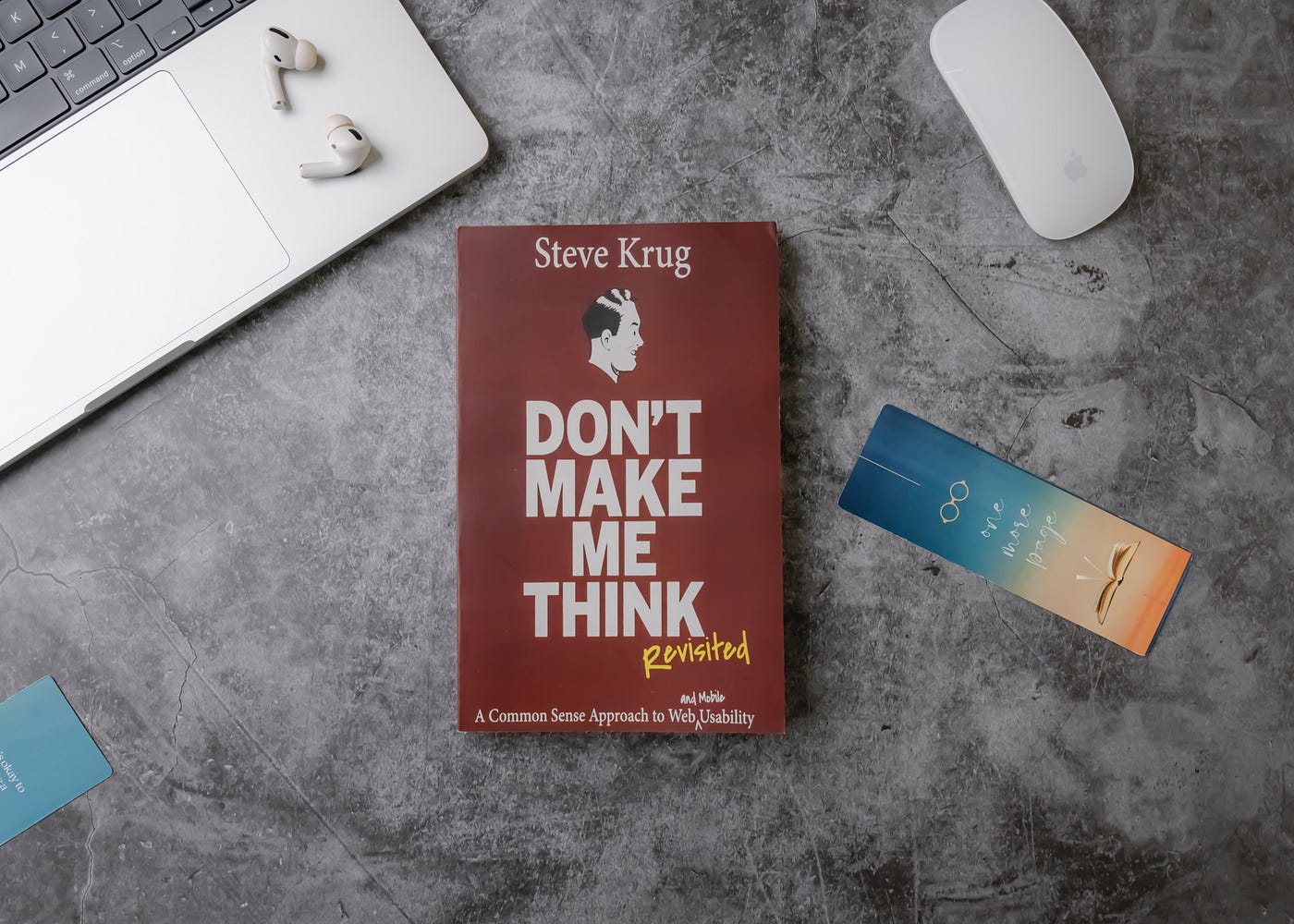
Don't Make Me Think Revisited by Steve Krug is a user-experience design classic, offering practical insights into creating intuitive and user-friendly websites.
The revised edition builds on the original work, providing updated examples and reinforcing the fundamental principles of effective web design.
Krug's central philosophy revolves around simplicity and clarity in web design. One key takeaway is the principle of "don't make me think," emphasising that a well-designed website should be self-explanatory and require minimal cognitive effort from users.
Krug argues that users should be able to navigate a site effortlessly, without having to pause and decipher the interface.
The book emphasises the importance of clear navigation and the use of conventions that users are already familiar with. Fundamentals that are worth going over now and again.
Krug advocates for a design that follows established patterns, ensuring that users can instinctively understand how to interact with a website based on their prior experiences.
Usability testing is also hugely important, according to Krug. He underscores the value of observing real users as they interact with a website, identifying pain points and areas for improvement.
The revised edition places even more emphasis on the iterative nature of usability testing, encouraging designers to continuously refine their work based on user feedback.
Krug introduces the concept of "happy talk" – the unnecessary and often ignored introductory text on websites. He argues for a concise and action-oriented approach, where the language used serves a clear purpose in guiding users through the site.
In the revisited version, Krug acknowledges the shift towards mobile devices as primary platforms for web interaction and provides insights into designing for a seamless experience across various screen sizes.
I would rank this one up there with The Design of Everyday Things, but tailored more for the web.
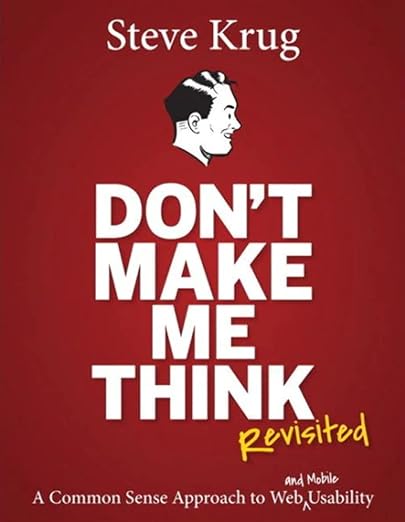
Don't Make Me Think
Hundreds of thousands of Web designers and developers have relied on web usability expert Steve Krug's guide to help them understand the principles of intuitive navigation and information design.
Witty, commonsensical, and eminently practical, it's one of the best-loved and most recommended books on the subject.
The Elements of User Experience
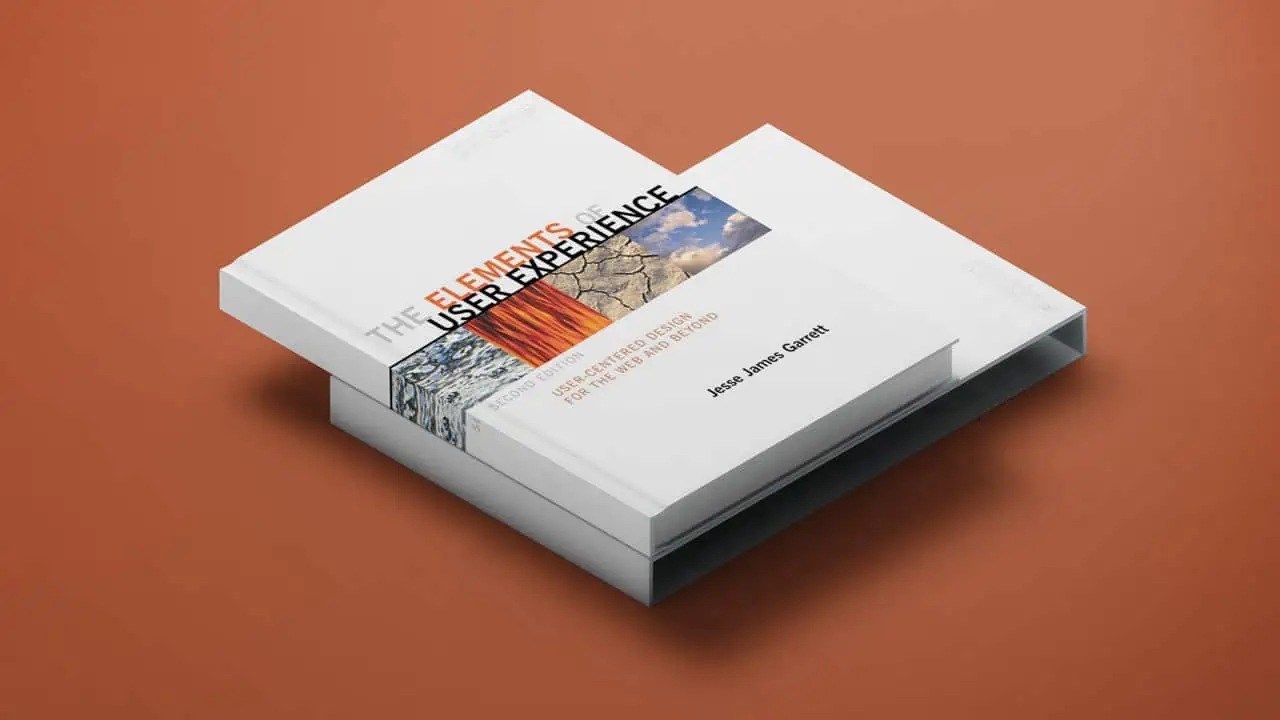
The Elements of User Experience by Jesse James Garrett is a seminal work that breaks down the complex process of creating a successful user experience (UX) into five essential elements. Garrett's model provides a holistic framework for understanding and designing user-centered digital products.
- Strategy: Defining Goals and Objectives
Garrett's model begins with the foundation of strategy, where the focus is on aligning business goals with user needs. This section emphasises the importance of setting clear objectives and understanding the target audience to create a solid foundation for the user experience design process. - Scope: Outlining Functional Specifications
The second element, scope, involves defining the features and functionalities of the product. Garrett encourages designers and founders to create a blueprint that outlines the product's capabilities and how users will interact with it. This step is crucial for establishing a clear roadmap for development. - Structure: Organising Information and Functionality
Structure deals with the organisation of information and functionalities to create a logical and intuitive flow. Garrett introduces concepts like information architecture and wireframing, stressing the importance of a well-organised structure to enhance user comprehension and navigation. - Skeleton: Designing the Interface
The skeleton element focuses on the visual and interactive aspects of the user interface. Garrett explores the principles of visual design, interaction design, and usability, highlighting the significance of creating a visually appealing and user-friendly interface that aligns with the overall structure. - Surface: Enhancing the Look and Feel
Surface is the final layer, where the aesthetics and sensory aspects of the user interface are addressed. Garrett discusses the importance of visual design elements, such as colour, typography, and imagery, in creating a polished and engaging user experience.
One key takeaway from the book is the interdependence of these elements. Garrett emphasises that a successful user experience requires a holistic approach that considers all five elements throughout the design process.
The book is not just a guide for designers but also serves as a valuable resource for founders seeking to understand the multifaceted nature of creating compelling and user-centric digital products.

The Elements of User Experience
From the moment it was published almost ten years ago, Elements of User Experience became a vital reference for web and interaction designers the world over, and has come to define the core principles of the practice.
Steal Like an Artist: 10 Things Nobody Told You About Being Creative
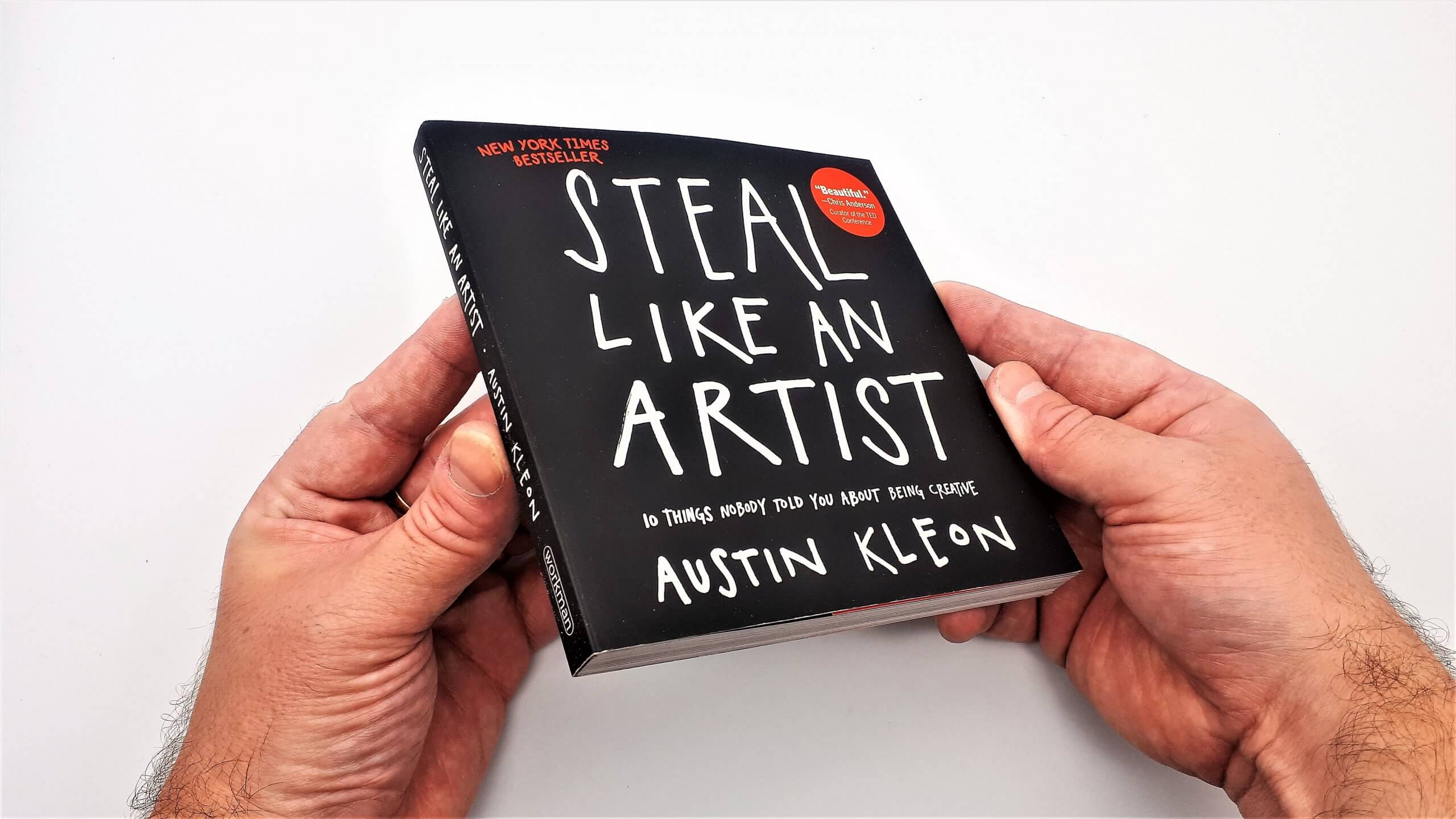
Steal Like an Artist by Austin Kleon is a creative manifesto that encourages individuals to embrace influence, explore creativity, and find their unique voice. The book offers practical advice and insights for artists, writers, and anyone seeking to unleash their creative potential.
- Embrace Influence: Build on What Inspires You
Kleon advocates for the idea that all artists are influenced by others. He encourages readers to acknowledge their influences openly and use them as a foundation for their own creative work. The message is to draw inspiration from a variety of sources and let those influences shape your unique artistic voice. - Creative Theft: Transform Ideas into Something New
The concept of "stealing like an artist" isn't about plagiarism but rather about taking ideas, remixing them, and creating something new. Kleon urges creators to transform what they take from others into their own original work, emphasising the importance of adding personal flair to borrowed concepts. - Develop Your Voice: Be Yourself, Everyone Else is Already Taken
Kleon emphasises the value of authenticity in creative work. He encourages artists to embrace their individuality and develop their own voice. The idea is to be genuine and true to oneself, avoiding the pressure to conform to others' expectations. - Side Projects and Hobbies: Fueling Creativity
The book encourages the pursuit of side projects and hobbies as a way to keep creativity flowing. Kleon argues that engaging in activities outside of your main creative focus can bring fresh perspectives and ideas that enrich your primary work. - Share Your Work: Connect with Your Audience
Kleon stresses the importance of sharing one's creative process and progress. By putting work out into the world, artists can connect with an audience, receive feedback, and cultivate a community around their creative endeavours. - Be Open: Network and Collaborate
The book advocates for openness to collaboration and networking. Kleon suggests that creative individuals can benefit from sharing ideas, collaborating with others, and being part of a creative community.
Steal Like an Artist is a concise and impactful guide that empowers individuals to tap into their creativity, celebrate their influences, and build a unique artistic identity.
It's a friendly and practical resource for anyone looking to navigate the creative process with authenticity and inspiration.
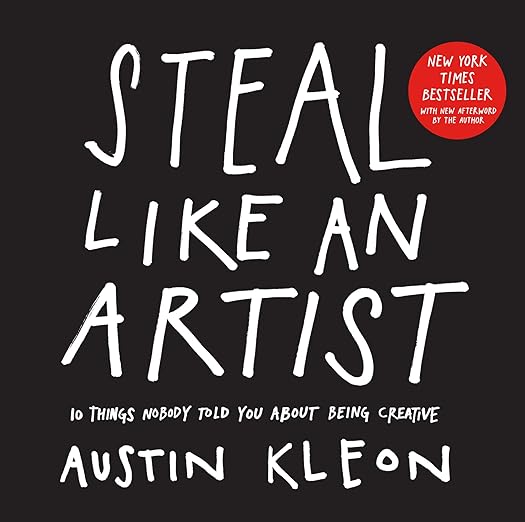
Steal Like An Artist
Artist Austin Kleon's beautifully illustrated bestseller teaches readers how to use their surroundings and their own creativity to discover their own artistic paths.
Creative Confidence: Unleashing the Creative Potential Within Us All
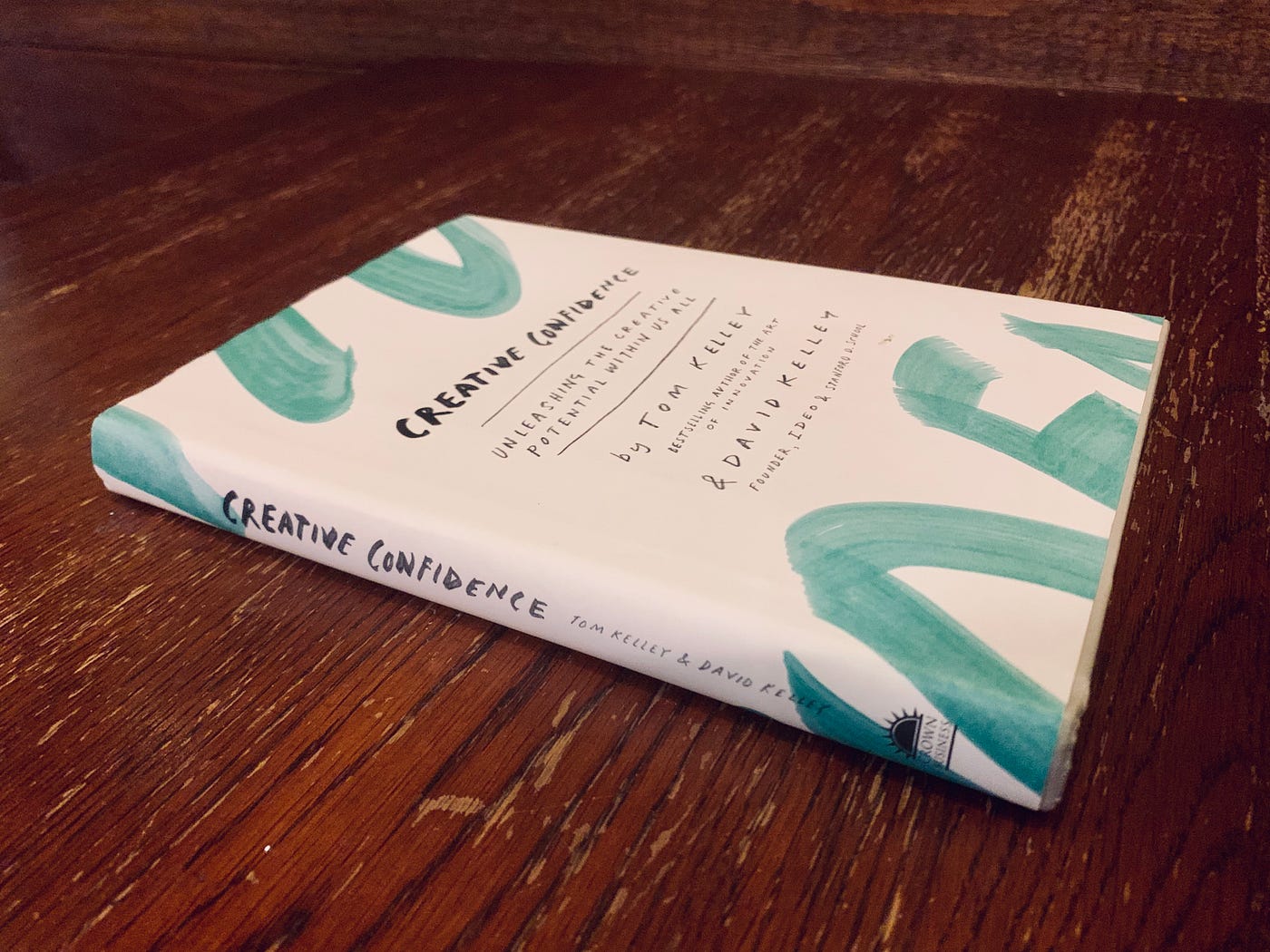
Creative Confidence: Unleashing the Creative Potential Within Us All by Tom Kelley and David Kelley explores the concept of creative confidence as a fundamental human capability that can be cultivated and applied in various aspects of life. Here's a breakdown of key points from the book:
- Everyone is Creative: Embrace Your Innate Creativity
The authors challenge the misconception that creativity is limited to a select few. They argue that everyone possesses creative potential and that unlocking this creativity is essential for personal and professional growth. - Overcome Fear of Judgment: Foster a Positive Creative Mindset
Creative confidence is hindered by fear of judgment. The book discusses strategies to overcome the fear of being wrong or making mistakes, emphasising the importance of fostering a positive and open mindset to unleash creativity. - Start Small: Incremental Progress Leads to Big Ideas
The authors advocate for the power of small, manageable steps in the creative process. They highlight that creative breakthroughs often come from consistent, incremental progress rather than attempting to make giant leaps. - Empathy in Design Thinking: Understand User Needs
A significant aspect of creative confidence is the application of empathy in design thinking. The book explores how understanding the needs and experiences of others can fuel innovative solutions, emphasising the importance of human-centred design. - Prototype and Iterate: Learn by Doing
The authors stress the value of prototyping and iteration in the creative process. They argue that learning by doing, testing ideas quickly, and refining them based on feedback are crucial steps in developing innovative solutions. - Collaboration: Harnessing the Power of Diverse Perspectives
Creative confidence is amplified through collaboration. The book discusses how diverse perspectives contribute to richer and more innovative outcomes, highlighting the importance of working with others to generate creative ideas. - Mindful Observation: Inspiration from the Everyday
The authors encourage readers to practice mindful observation, finding inspiration in everyday experiences. By being present and observant, individuals can uncover insights that spark creative ideas. - Tolerate Ambiguity: Navigate Uncertainty with Confidence
Creative confidence involves embracing ambiguity and navigating uncertainty with a sense of assurance. The book provides insights into developing the resilience and adaptability needed to thrive in uncertain creative endeavours.
In summary, "Creative Confidence" serves as a guide for individuals seeking to unlock and harness their creative potential.
The authors provide practical strategies, real-world examples, and a compelling case for the transformative power of creative confidence in both personal and professional contexts.

Creative Confidence: Unleashing the Creative Potential within Us All
A powerful and inspiring book from the founders of IDEO, the award-winning design firm, on unleashing the creativity that lies within each and every one of us.
The Non-Designer's Design Book
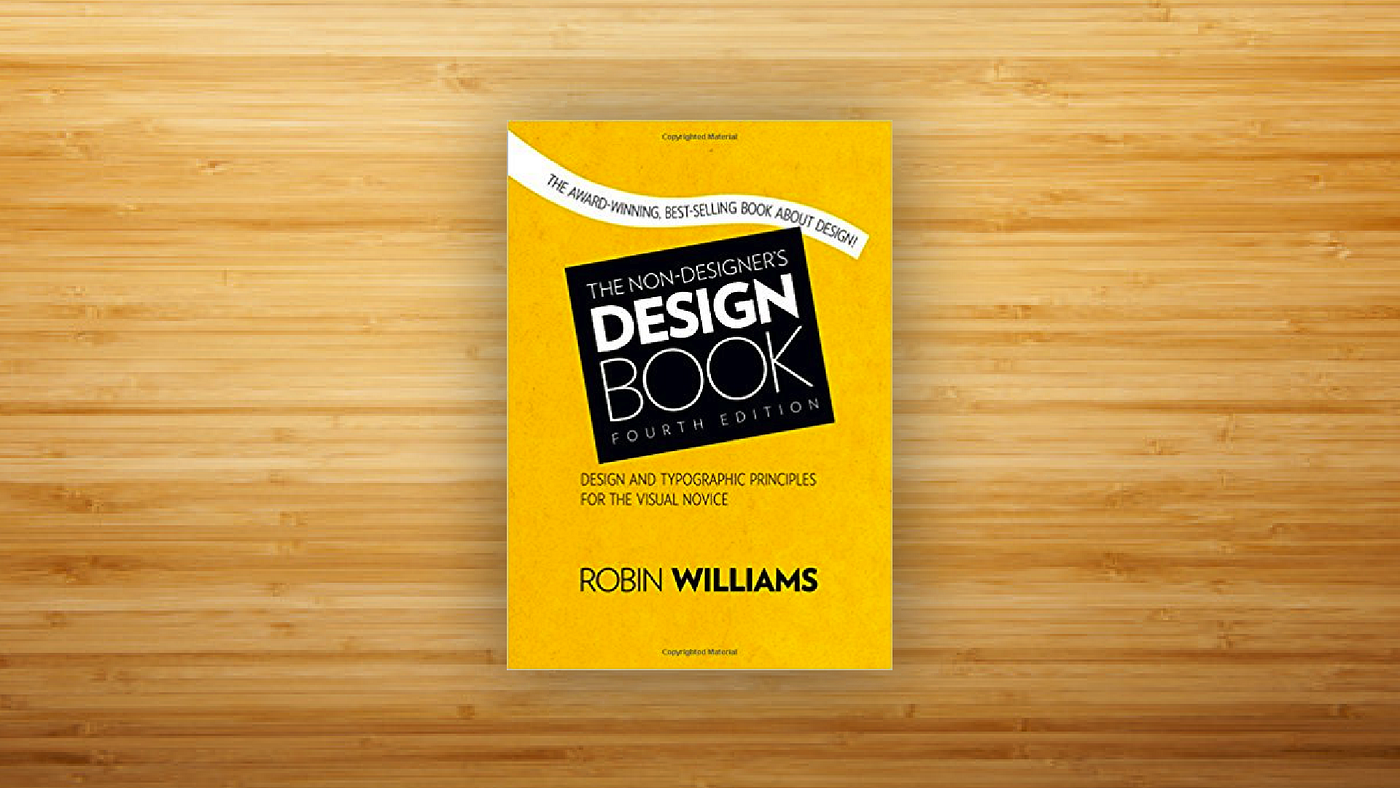
The Non-Designer's Design Book by Robin Williams (No, not that one) is a user-friendly guide tailored for individuals who may not have a formal background in design but are eager to enhance their design skills. The book breaks down design principles in a clear and accessible manner. Here are key points from the book:
- Four Basic Principles of Design: CRAP
Williams introduces the foundational principles of design with the acronym CRAP: Contrast, Repetition, Alignment, and Proximity. These principles serve as a practical framework for creating visually appealing and well-organised designs. - Contrast: Adding Visual Interest
The book emphasises the importance of contrast in design to create visual interest and hierarchy. Contrast can be achieved through variations in colour, size, shape, and other design elements. - Repetition: Establishing Consistency
Repetition is introduced as a way to establish consistency in design. Consistent use of elements such as fonts, colours, and styles helps create a cohesive and professional look. - Alignment: Creating a Clean Layout
Proper alignment is crucial for creating a clean and organised layout. Williams explains how aligning elements on a page contributes to a sense of order and clarity in design. - Proximity: Grouping Related Elements
Proximity is discussed as a technique for grouping related elements together. By placing related items close to each other, designers can convey connections and organisation within a design. - Typography Basics: Choosing and Using Fonts
The book covers fundamental typography principles, including font selection, spacing, and alignment. It provides practical tips for making text readable and visually appealing. - Colourcolour: Understanding Basic Principles
Williams introduces the basic principles of colour theory, explaining concepts such as the colour wheel, complementary colours, and creating colour harmony. The book offers guidance on using colour effectively in design. - Layout and Design Projects: Practical Application
The book includes hands-on design projects to reinforce the principles discussed. These projects provide readers with an opportunity to apply what they've learned in a practical context. - Understanding Visual Hierarchy: Guiding the Viewer
Visual hierarchy is explored as a means of guiding the viewer's attention through a design. Williams provides insights into how size, colour, and placement contribute to establishing hierarchy. - Tips for Improving Design: Practical Advice
Throughout the book, Williams includes practical tips and advice for improving design, addressing common mistakes and offering guidance on creating more visually appealing layouts.
The Non-Designer's Design Book is a valuable resource for individuals looking to enhance their design skills without a formal design background.
The book's practical approach, clear explanations, and hands-on projects make it accessible and applicable for those seeking to create more visually engaging and effective designs.
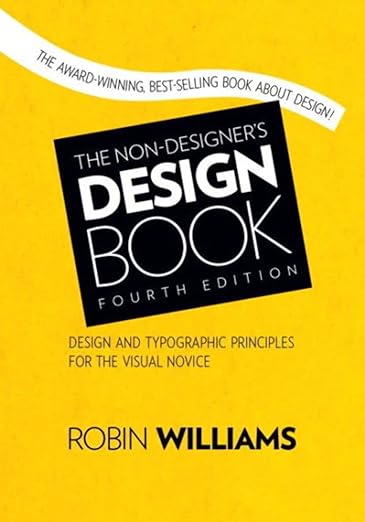
The Non-Designer's Design Book
For nearly 20 years, designers and non-designers alike have been introduced to the fundamental principles of great design by author Robin Williams. Through her straightforward and light-hearted style, Robin has taught hundreds of thousands of people how to make their designs look professional using four surprisingly simple principles.
Influence: The Psychology of Persuasion
Influence: The Psychology of Persuasion by Robert B. Cialdini is a classic exploration of the psychological principles behind why people say "yes" and how to influence others effectively. Cialdini identifies six key principles of influence, providing insights into the art and science of persuasion.
- Reciprocity: Give and Take
Cialdini introduces the concept of reciprocity, demonstrating that people are more likely to comply with requests if they feel they have received something in return. The book explores how the principle of reciprocity operates in various social and business contexts. - Commitment and Consistency: The Power of Small Commitments
The book delves into the psychological tendency of individuals to stay consistent with their past actions and commitments. Cialdini explains how getting someone to make a small initial commitment can increase the likelihood of them making larger commitments later. - Social Proof: Following the Crowd
Social proof is examined as the phenomenon where people look to others for cues on how to behave. Cialdini discusses how testimonials, endorsements, and the actions of others can be powerful influencers in decision-making. - Authority: The Impact of Expertise
The book explores the influence of authority figures and expertise in persuading others. Cialdini discusses how perceived authority can shape compliance and why people are more likely to follow the recommendations of credible and knowledgeable sources. - Liking: The Influence of Affinity
Cialdini emphasises the role of liking in persuasion. People are more inclined to say "yes" to those they know and like. The book explores factors that contribute to likability and how they can be leveraged in various situations. - Scarcity: The Allure of the Rare
The principle of scarcity is discussed, highlighting how people are more motivated to take action when they perceive a limited availability of something. Cialdini explores how the fear of missing out can be a powerful driver of decision-making. - Applicability in Everyday Situations: Real-Life Examples
Throughout the book, Cialdini provides real-life examples and anecdotes that illustrate the principles of influence in action. This makes the psychological concepts tangible and applicable to various situations. - Ethical Considerations: Responsible Persuasion
Cialdini addresses the ethical implications of using the principles of influence, emphasizing the importance of responsible and ethical persuasion. The book encourages readers to use these principles for positive outcomes.
Influence serves as a comprehensive guide to understanding the psychology of persuasion. Cialdini's exploration of these principles provides valuable insights for individuals in various fields, from marketing and sales to leadership and everyday interactions.
The book encourages readers to become more aware of the factors influencing their decisions and the decisions of others, fostering a deeper understanding of human behaviour.

The Psychology of Persuasion
Robert Cialdini’s books, including his New York Times Bestselling Influence and Pre-Suasion, have sold more than seven million copies in 44 different languages.
Atomic Habits: An Easy & Proven Way to Build Good Habits & Break Bad Ones
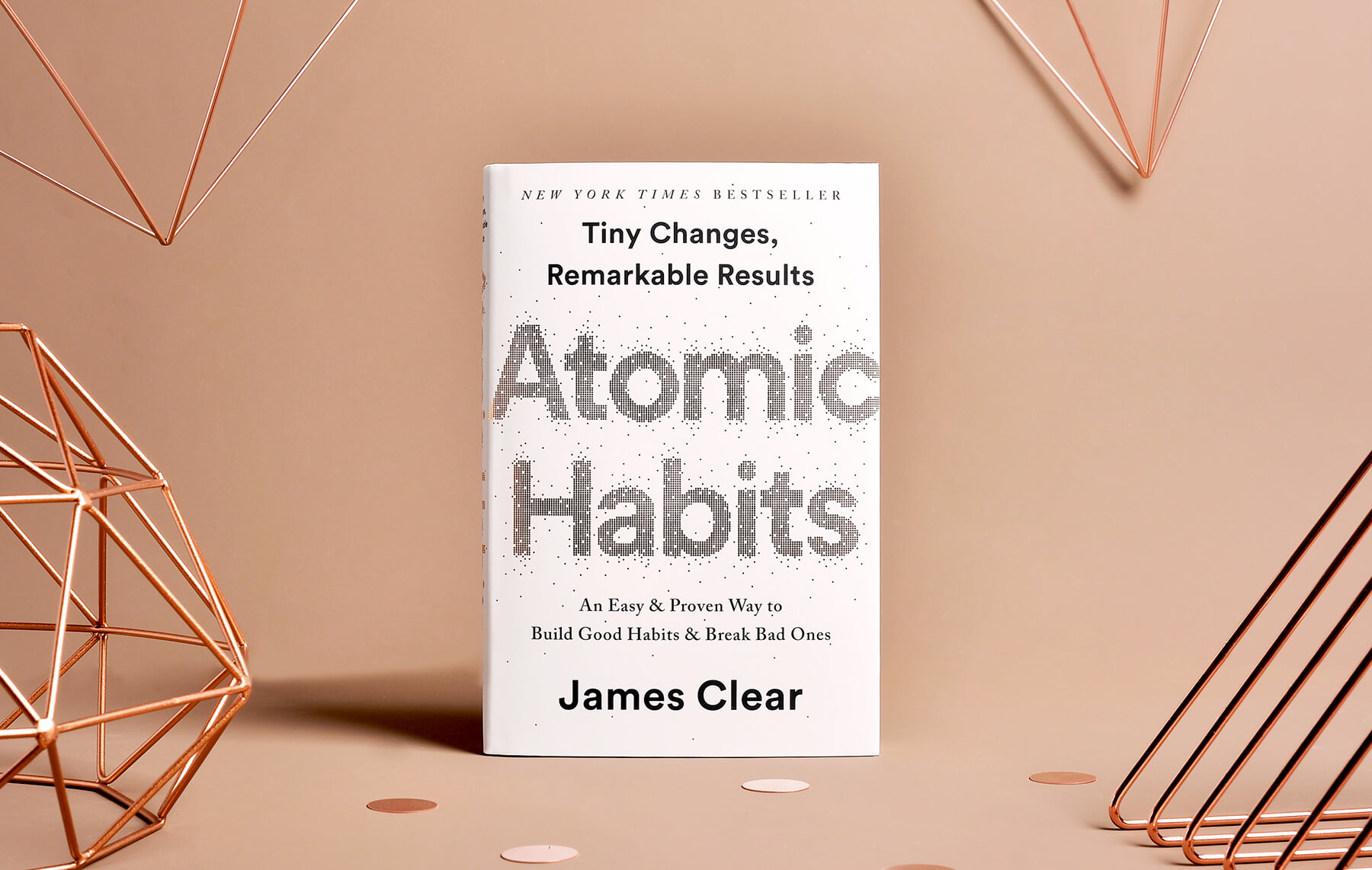
Atomic Habits: An Easy & Proven Way to Build Good Habits & Break Bad Ones by James Clear is a bestselling book that delves into the science of habit formation, offering practical insights and strategies for building positive habits and breaking negative ones. Here are key points from the book:
- The Power of Atomic Habits: Small Changes, Remarkable Results
Clear introduces the concept of atomic habits, emphasising the impact of small, incremental changes over time. The book advocates for focusing on the compounding effect of tiny habits to achieve significant and lasting results. - The Four Laws of Behavior Change: Cue, Craving, Response, and Reward
Clear outlines the four laws that underpin habit formation: cue, craving, response, and reward. Understanding these components is crucial for reshaping habits. The book explores how habits loop through these stages and how individuals can intervene at each step for positive change. - Make It Obvious: Clarify Your Cues
The book discusses the importance of making cues obvious to initiate habit formation. Clear guides on identifying and clarifying cues to make the desired behaviour more apparent and actionable. - Make It Attractive: Increase the Craving
Clear explores the role of attractiveness in habit formation. By making habits more appealing, individuals can increase their craving for positive behaviours. The book offers strategies for adding elements of enjoyment and satisfaction to habits. - Make It Easy: Simplify the Response
The principle of making habits easy involves simplifying the steps needed to perform the desired behaviour. Clear provides practical advice on reducing friction and obstacles, making it easier to integrate positive habits into daily routines. - Make It Satisfying: Enhance the Reward
The book delves into the importance of satisfaction in reinforcing habits. Clear discusses how increasing the immediate rewards associated with a habit can make it more satisfying, reinforcing the likelihood of its repetition. - The Role of Identity: Becoming the Person You Want to Be
Clear introduces the concept of identity-based habits, emphasising the role of self-perception in habit formation. By aligning habits with a desired identity, individuals can cultivate lasting behavioural change. - Habit Tracking and Measurement: Quantify Your Progress
The book advocates for tracking habits to measure progress and stay accountable. Clear discusses the effectiveness of habit tracking in building self-awareness and maintaining momentum. - The Plateau of Latent Potential: Trusting the Process
Clear addresses the concept of the plateau of latent potential, highlighting the importance of persisting through the initial stages of habit formation when results may not be immediately visible. Consistency and patience are key to unlocking hidden potential. - Continuous Improvement: Embracing a Growth Mindset
Atomic Habits encourages a mindset of continuous improvement. Clear emphasises that habits are a lifelong process and that individuals should focus on getting 1% better each day. This mindset fosters long-term success and sustained growth.
In summary, "Atomic Habits" provides a comprehensive and actionable guide to understanding and shaping habits. James Clear's approach blends scientific insights with practical strategies, making it accessible for individuals seeking to transform their behaviours and cultivate positive habits.
The book is a valuable resource for anyone looking to create lasting change in their personal and professional lives.
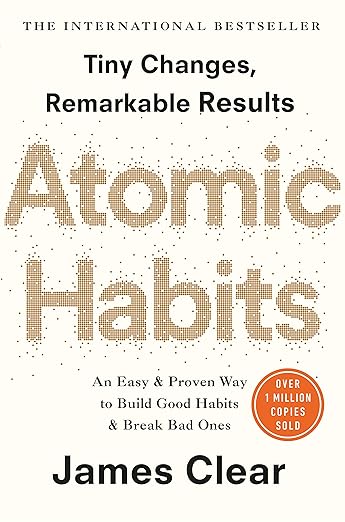
Atomic Habits
In this ground-breaking book, Clears reveals exactly how these minuscule changes can grow into such life-altering outcomes. He uncovers a handful of simple life hacks (the forgotten art of Habit Stacking, the unexpected power of the Two Minute Rule, or the trick to entering the Goldilocks Zone), and delves into cutting-edge psychology and neuroscience to explain why they matter.




Comments ()